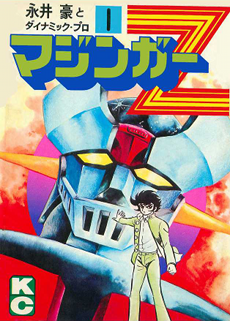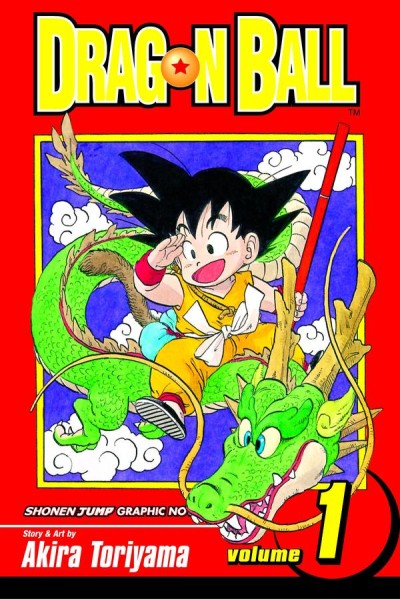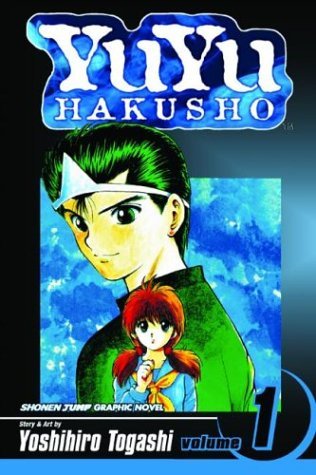Here we go again.
Those that are unaware, I have been watching anime for over two decades at this point. I don't do this because I'm a "Glorious Nippon" type who hates anything western or because I'm obsessed with animation, but because unlike other mediums it is one of the few that managed to keep its core intact. Anime tells fantastical stories using 2D animation, a format all but ejected by the west, and has no real limit on what can be achieved through it. This means you get a lot of terrible messes, but also some classics you would not get elsewhere. Nonetheless, because of this I have tried to keep an eye on the industry through its darker moments.
There have been a lot of darker moments. Starting in the late 00s, around 2007, the medium began sacrificing imagination and energy for fetishism and low effort works that did not take advantage of the medium they were in. This continued a bit into the '00s, but series such as Tiger & Bunny and Psycho Pass did prove that there were those who didn't forget what it was about. The decade took a while to regain its footing, and I believe it finally did by 2015 with works such as One Punch Man, Ushio & Tora, and Blood Blockade Battlefront going back to its roots.
I've been recording the upswing in the anime industry in recent years on this blog. 2015 marked the first year in some time to try for more mainstream appeal again by remembering what made the medium great, and 2016 was an even better improvement over that with the most series worth seeing since near a decade. However, 2017 was a step back as if they were not sure about themselves. There were good series, however there were not as many and bad habits began to resurface. Despite that lesser year, 2018 was a definite improvement, returning to the high that was 2016. It definitely looks like they have decided on the right direction.
The industry still has its troubles. Home media sales are falling and piracy is as big a problem as ever, not to mention working conditions for animators and a reliance on fleecing a shrinking audience with low effort garbage. However, there are bright spots.
So let us have a look at the past year in anime and what is coming for the year ahead.
Winter
The winter season starts in January and runs until April. Usually this is the dumping ground for series that didn't make the much hotter Fall or Spring seasons for whatever reason, however there are sometimes high quality hits hidden here. Erased is one from 2016, and this year there was Megalo Box. But some new seasons of Seven Deadly Sins, Saiki K, Overlord, and Gintama also premiered here thereby making this season quite good for a winter season.
Carryovers from last year such as Garo: Vanishing Line, and the movie Mazinger Z: Infinity also added to make this a good season. On top of it Netflix exclusives such as AICO the Incarnation and Devilman Crybaby were surprising additions. This was also the season the controversial Trigger series (but I repeat myself) Darling in the Franxx premiered.
One also can't forget about the absurd Pop Team Epic which took the anime world by surprise and confounded stuffy shirt critics. It was quite the winner. But, as mentioned, the highlight of the season, by far, was Megalo Box.
Megalo Box was made for the anniversary of Ashita no Joe, one of manga's seminal series and a classic anime on top of it. It's an original series that takes the concept and themes of the original series and does them homage by telling a brand new story with those elements. So while the original is about a young punk struggling to find his place in an unforgiving world, this is about a down on his luck man in a cyberpunk future struggling to find his purpose in a world where humanity is slowly being deconstructed and replaced with better parts.
This was one of the best anime I have seen in years with an ending that is surprisingly controversial considering the conclusion of Ashita no Joe. But its themes are perfectly congruent with the original, and it added enough of an original spin to make it both a perfect tribute and totally fresh idea. It was accordingly ignored by the anime media.
That was only the first season of the year.
Spring
Spring of course was buoyed by My Hero Academia which already is a great start to build a series around. However, it wasn't alone. New anime of classics like Captain Tsubasa, Gegege no Kitaro, and Legend of the Galactic Heroes were welcome additions, but new seasons of old shows such as Full Metal Panic: Invisible Victory and Gundam Build Divers also existed. These were all worth the watch, being more than just remakes of old series.
But there was new material, as well. Chief among them being Golden Kamuy. This show suffered from having nightmarish 3D (that was used sparingly, and was actually effective given what the CG was used for) and a more lax pace near the start, but its pulp gold rush adventure story was something very fresh for the medium. It even got a split cour release this year--the first being in Spring and the second in Fall where it remained a highlight in both.
Golden Kamuy was also embroiled in controversy, as a side character who is a man took plastic surgery to disguise himself as a woman. This was apparently not acceptable by the anime media though nobody watching actually cared. Thankfully their influence appears to be dying as watchers realize the absurdity of their complaints. Yet another item to add to the list of this year being an improvement.
Other new shows included Lupin III: Part V, Piano no Mori, Hinamatsuri, and Steins;Gate Zero which were all really popular additions to make this season better than you would expect. This isn't including holdovers from the last season, either. Instead of hanging its hat on My Hero Academia there was plenty here worth watching.
Those CG bears will replace the whale in my nightmares, however.
Summer
Typically the second weakest season of the year aside from the Spring holdovers, Summer was a tiny bit better than usual.
This season had the woefully misunderstood Banana Fish (looking for portrayals of positive relationships in this series is missing the point of the overall theme of corruption) that was needlessly modernized setting-wise but remains violent as all get out with quite a lot of disturbing content. The bizarre High Score Girl about arcade games and romance in the early 90s was far more accurate than American fare like Everything Sucks. Then there was also Planet With and the third season of Overlord.
Oh, and the third season of a little known series called Attack on Titan started. This season was not wanting for content.
But there was also a release of the My Hero Academia movie which came out of nowhere to surprise. Not only was it a hit, but also succeeded overseas on a scale not seen in a while proving just how much gas still remained in the franchise despite being three years in on it. It also shows how anime, and theatrical 2D animation, are still viable choices for studios. The western industry does not have to be as terrible as it is.
All in all, Summer turned out better than expected. Not bad at all.
Fall
This is usually the strongest season of the year, and this year did not disappoint. First thing to mention is a little show called Goblin Slayer which ended up blowing the landscape to pieces with controversy after controversy and managing to bring in a lot of attention to both the series and industry at the same time. Double Decker ended up being an action comedy that was quite a bit weirder than originally expected. Hinomaru Zumou was a sports anime with a lot of hot blood and spirit. Karakuri Circus was wonderfully weird and exciting but too fast paced and "dated" for anime journalists (they really had some bad takes this year) and will continue over into 2019. Then there was Trigger's somehow controversial yet better received SSSS.Gridman. The new series were off the chain, and remarkably well received.
The season was packed. New seasons of older series included Fairy Tail, Golden Kamuy, JoJo's Bizarre Adventure, A Certain Magical Index, and even Sword Art Online for anyone still into that. All the heavy hitters short of a Dragon Ball series were here. There was something for everyone, and not much in the way of low points.
There was also Zombieland Saga as this year's pointless fanbait show, but I'll mention it just for its popularity. Don't expect to hear much about it next year. Just as always they quickly vanish from memory. Though this one did have yet another controversy because the western anime journalists have nothing better to do.
That was 2018. It was quite impressive considering 2017's step back and shying away from its improvements. There still remained crap, as there always will, but what was there did not reach as low a level as one would expect or were as plentiful as some in recent years. There was no Handshakers in 2018. Moe and idol shows did not have as big a presence as they had in recent years. As a whole the year worked.
That's all well and good, but how about 2019? That is the real question. How is that looking? Will it be an improvement like 2016 was over 2015, or will it be a letdown like 2017 from 2016? Thankfully we know a few series ahead of time. Let's have a look at a few highlights coming down the pike.
First let's mention sequel series, as they are always announced first. Mob Psycho 100, One Punch Man, and My Hero Academia. are all getting new seasons. This already puts the year over 2015 and matches 2017. There are also new series for Boogiepop, Dororo, and Ultraman. Oh, and again, more Attack on Titan.
However, we must also discuss what is new and what might get overlooked for more trash that the industry will try to push over the quality. Not everything airing has been announced for 2019, but there are a few series I can mention.
The Promised Neverland (Winter)
This was the most recent big hit to come from Shonen Jump, and you wouldn't know it from the trailer. It's not the sort of series you might expect. The Promised Neverland has more in common with a Death Note or a Naoki Urasawa manga than it does with Dragon Ball or My Hero Academia. Since this will probably only be 12 episodes or so (if it were 24 it would end in the middle of something else in the story) it will cover a very riveting and tense drama that builds to an explosive finale of things going sideways. The first part of this one is intense.
The series has a small cast which develops remarkably well throughout this arc of the story as they learn to adapt to new information and use their heads to think their way out of a bad situation. Should you want something different then this is what you will want to see. This isn't a lighthearted series.
Demon Slayer: Kimetsu no Yaiba (Spring)
Speaking of Shonen Jump, the magazine recently had its 50th anniversary and had many anime adaptions announced. The one that peaked my interest, and anyone who had read been reading the series, was the one announced for this one. Being adapted by the studio behind the Fate series, Demon Slayer: Kimetsu no Yaiba stars a boy who loses his family due to a demon attack. He joins the demon hunters to find his revenge and to prevent what happened to him happen to anyone else. Along the way he discovers allies, monsters, and a battle between good and evil that has been going on for centuries.
In my opinion, this is the second best series currently running in Shonen Jump behind My Hero Academia, and well deserves whatever popularity I hope it gains from this anime adaption. This is the most bloody, intense, and violent, series in the magazine right now with quite a lot of pathos, hot blooded emotion, and oddly touching moments that arrive out of the chaos. Since MHA unfortunately isn't running in Spring this year I highly recommend watching this instead. You will be surprised at how good it gets.
Dr. Stone (Summer)
Completing this trilogy of Jump recommendations we end with Dr. Stone. One day the sky is filled with a strange light and everyone in the world is turned to stone. After thousands of years some finally awaken to find the world is a much different place. But one young man has just the right amount of knowledge of the old world to help bring it back. By the writer of Eyeshield 21 and drawn by the man behind Sun-Ken Rock, this is the type of pro-science series that could not be made in the west without heavy propaganda. As the character reintroduces lost science in the world and discover what put them there they learn exactly what they will need to survive and work hard to create a way out of every deadly situation they find themselves in.
This is a very fun adventure series with just the right amount of cleverness and action that would make it fit into an issue of Astounding (but not Analog) and this adaption should hopefully do it justice. I'm not sure how well this adaption will do, but expect either controversy or cultists from the western industry to gather around it in an attempt to ruin its pleasant tone.
So what is my final analysis of the state of the anime industry? I think it is improving, slowly but surely. I was almost certain 2019 would include some walking back like 2017 did, but just the opposite happened. Considering where this decade started out back in 2010, anime has really made steady improvements from the mistakes made in the late '00s and has almost taken all of them back with increased streaming, less cynical merchandising attempts, and more ideas that are closer to the heart of what makes the medium what it is and allowed it to take off worldwide in the first place.
Outside of television, manga's digital sales in Japan have overtaken physical, but they are also increasing overall. Overseas manga and anime are picking up the slack for the dead western industry of comics and animation, even live action TV can't match it. The Japanese gaming industry might be mixed (Sony has given over control to California and heavy censorship while Nintendo has not) but the rest appears to be on an upswing. They have learned and adjusted accordingly.
This is where we're at now. The changes in the '00s were a mistake, and the '10s started off in an even worse place, but effort managed to turn that around to where we are now. For the first time in near two decades it looks like the future of the medium might be bright, and that's a good thing. I can't say I saw this coming back then.
2019 should be a lot of fun.
My 2019 had some great releases. I had stories in issue 3 of StoryHack and in DimensionBucket Magazine and am working on others I'm hoping will be out in 2019. This past year wasn't perfect, but I can't lie and say I'm not looking forward to the upcoming year. Things really are getting better, so let us see where the final year of the decade gets us. I can't imagine what will happen next.















